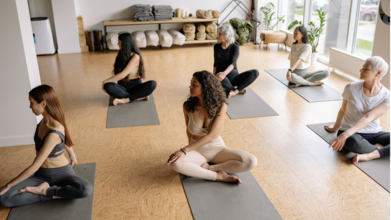- Health Conditions A-Z
- Health & Wellness
- Nutrition
- Fitness
- Health News
- Ayurveda
- Videos
- Medicine A-Z
- Parenting
- Web Stories
National Sports Day 2024: Theme, Significance And Impact Of Sports On Your Health And Happiness

National Sports Day is celebrated in India on August 29th every year, commemorating the birth anniversary of hockey legend Major Dhyan Chand. This day honors his legacy and emphasizes the importance of sports and physical activities in daily life. In 2024, the theme focuses on "Inclusivity in Sports: Bridging Gaps and Breaking Barriers," highlighting the essential role of sports in fostering unity, equality, and well-being across different communities and individuals, regardless of their gender, physical abilities, or background.
The celebration of National Sports Day serves as a reminder of the transformative power of sports in our lives. It is not just about physical prowess but also about mental resilience, emotional balance, and social cohesion. As we delve into the theme for this year, it becomes crucial to understand how sports contribute to holistic health, including physical, mental, and emotional aspects, while promoting inclusivity and breaking down societal barriers.
Significance of National Sports Day
National Sports Day holds a special place in India’s calendar, symbolizing the country’s deep-rooted love for sports. Major Dhyan Chand, whose birthday the day commemorates, is often hailed as one of the greatest hockey players in the world. His contributions to Indian sports have left an indelible mark, inspiring generations of athletes. The day is not only a tribute to his legacy but also an opportunity to encourage more people to participate in sports, recognizing its significant benefits.This year's theme, 'Inclusivity in Sports: Bridging Gaps and Breaking Barriers,' highlights the ongoing efforts to make sports accessible to everyone. It underscores the importance of creating an environment where people of all genders, ages, and abilities can engage in sports activities without facing discrimination or limitations. This inclusivity is vital for a healthier society, as it promotes equality, unity, and shared experiences.
National Sports Day 2024: Theme
The theme for National Sports Day in 2024 is 'Inclusivity in Sports: Bridging Gaps and Breaking Barriers'. Inclusivity in sports is a critical issue that has gained more attention in recent years. Historically, sports have been dominated by able-bodied men, with women, differently-abled individuals, and marginalized communities often excluded or underrepresented. The theme for National Sports Day 2024 emphasizes the need to address these inequities and create opportunities for all individuals to participate in sports.Efforts are being made to ensure that sports facilities, programs, and events are more inclusive. This includes providing resources and support for women in sports, ensuring that people with disabilities have access to adaptive sports programs, and creating safe spaces for marginalized communities to engage in sports activities. By doing so, sports can become a powerful tool for social change, helping to break down barriers and foster a more inclusive society.
The challenges faced by women and individuals with disabilities in sports are well-documented. Women athletes often struggle with unequal pay, lack of sponsorship, and inadequate facilities, while people with disabilities may face physical and societal barriers that prevent them from participating in sports. However, with increased awareness and advocacy, there has been a gradual shift towards more inclusive practices, ensuring that everyone, regardless of their gender or physical abilities, can experience the joy and benefits of sports.
Impact of Sports on Physical Health
The physical benefits of sports are well-known and widely acknowledged. Regular participation in sports can help individuals maintain a healthy weight, improve cardiovascular health, and increase strength and endurance. Engaging in physical activities also reduces the risk of chronic diseases such as diabetes, hypertension, and obesity. Moreover, sports can help in enhancing flexibility, coordination, and overall physical fitness.In addition to these benefits, sports also play a crucial role in promoting healthy aging. As individuals grow older, maintaining an active lifestyle becomes increasingly important. Regular physical activity, including sports, can help older adults preserve their muscle mass, improve their balance, and reduce the risk of falls. It also contributes to better bone health, which is particularly important for preventing osteoporosis and fractures.
The impact of sports on physical health is not limited to competitive athletes; it extends to people of all ages and fitness levels. Whether it's a child playing in a schoolyard, an adult participating in a recreational league, or an older adult taking part in a senior fitness program, sports provide an enjoyable and effective way to stay active and healthy.
Mental and Emotional Benefits of Sports
Sports are not only beneficial for physical health but also have a profound impact on mental and emotional well-being. Regular participation in sports has been linked to improved mental health outcomes, including reduced symptoms of depression, anxiety, and stress. Engaging in physical activities triggers the release of endorphins, the body's natural mood elevators, which contribute to a sense of happiness and well-being.
Moreover, sports can help individuals develop important life skills such as teamwork, leadership, and discipline. These skills are not only valuable on the field but also in everyday life. For children and adolescents, participating in sports can boost self-esteem, foster social connections, and provide a sense of belonging. For adults, sports can offer a healthy outlet for stress and a way to build and maintain relationships.
The emotional benefits of sports are also significant. Engaging in sports provides a sense of achievement and purpose, which can be particularly important during challenging times. Whether it's the thrill of scoring a goal, the satisfaction of completing a challenging workout, or the camaraderie of being part of a team, sports can provide a much-needed emotional boost.
5 Ways You Can Add Sports-Related Activity in Your Daily Life
Here are five simple ways to add sports into your daily life:
Morning Jog or Run: Start your day with a 20-30 minute jog or run in your neighborhood or local park to boost your energy and fitness.
Join a Local Sports Team: Sign up for a recreational sports team, like soccer, basketball, or volleyball, to stay active and socialize with others.
Lunchtime Walks: Use your lunch break for a brisk walk or quick workout, like stretching or light exercises, to break up your day.
Home Workouts: Set aside 15-20 minutes for a home workout routine, such as yoga, pilates, or bodyweight exercises.
Weekend Sports Activities: Dedicate weekends to outdoor sports activities like cycling, swimming, or hiking to stay active and enjoy nature.
National Sports Day is more than just a celebration of athletic achievements; it is a reminder of the profound impact sports can have on our lives. From improving physical health to enhancing mental and emotional well-being, sports offer a wide range of benefits that contribute to a healthier, happier, and more inclusive society. As we celebrate this day, let us recognize the importance of making sports accessible to everyone and commit to creating a more inclusive and equitable environment for all.
With the theme of "Inclusivity in Sports: Bridging Gaps and Breaking Barriers," we can work towards a future where everyone, regardless of their background or abilities, can experience the joy and benefits of sports. Let this National Sports Day inspire us to come together, support one another, and continue to promote the power of sports for holistic health and well-being.
A Simple 10-Minute Daily Habit Can Boost Sleep Quality

Credits: Canva
Public health advice has usually centered on how much sleep we get. Eight hours has long been the magic number, but researchers are now uncovering that how well you sleep matters just as much — maybe even more. Deep, restorative sleep is the body’s prime time for repairing tissue, consolidating memories, and balancing mood-regulating hormones. And as it turns out, a surprisingly simple daily habit can help you get more of it.
A new study from The University of Texas at Austin, published in the Journal of Physical Activity & Health, followed students over several months using wearable devices like Fitbits. Instead of just counting total exercise minutes, the research team zoomed in on how often people moved.
The big reveal? Those who exercised regularly even for just 10 minutes a day enjoyed deeper, more restorative non-REM sleep, the stage most critical for brain and body recovery. “Frequency does seem to matter,” said Benjamin Baird, a research assistant professor of psychology and one of the study’s lead authors.
Why 10 Minutes Is Enough?
Moderate to vigorous activity — think brisk walking, cycling, or any movement that quickens your breath while still allowing conversation — for as little as 10 minutes daily had measurable benefits. This wasn’t about logging intense workouts or breaking personal records. Even light, consistent movement like short walks or standing breaks improved sleep quality and next-day mood.
According to Chris Corral, co-lead of the study, “You don’t need to run marathons. Just moving a little each day helps. Light activity counts too. Doing something is better than doing nothing.”
Participants who moved daily didn’t just sleep better — they woke up feeling more energized and reported lower stress levels. This connection between non-REM sleep and mood has been observed before, but most earlier studies only looked at short-term effects in controlled lab settings.
What made this study different was its real-world design. By tracking people’s habits continuously for months, researchers could see the cumulative benefits of consistent movement on sleep and emotional well-being.
How We Measure “Enough” Exercise?
Current guidelines from the Centers for Disease Control and Prevention (CDC) and World Health Organization (WHO) recommend 150 minutes of moderate activity per week. But they don’t specify how to spread it out. That gap matters.
“If you pack all that activity into the weekend, you might miss out on the sleep benefits of moving daily,” Corral explained. The UT findings hint that public health advice may need updating — shifting the focus from total minutes to frequency.
How Sleep Quality Shapes Overall Health?
Deep sleep isn’t just about feeling rested. It’s when the brain clears waste proteins linked to neurodegenerative diseases like Alzheimer’s. It’s also when muscles repair, immune cells strengthen, and the nervous system resets. Poor-quality sleep, on the other hand, is tied to higher risks of heart disease, diabetes, depression, and even shortened lifespan.
In other words, this isn’t just about feeling less groggy — it’s about long-term brain and body health.
The study’s use of wearable trackers like Fitbits allowed researchers to capture a detailed picture of both movement and sleep in real life — not just in the artificial environment of a lab. This is part of the Whole Communities—Whole Health initiative, an interdisciplinary project aiming to understand how everyday habits affect overall well-being.
Next, researchers plan to see if these findings hold true in more diverse populations, including older adults and people with chronic health conditions.
Why Better Sleep Is Essential for Everyday Wellness?
Move daily, even briefly — A brisk walk after dinner, stretching breaks at your desk, or climbing stairs instead of taking the elevator all count.
Consistency beats intensity — Doing a little bit every day trumps exhausting yourself a few times a week.
Pair movement with good sleep hygiene — Keep a consistent bedtime, limit screen exposure before bed, and create a cool, dark sleeping environment for maximum benefit.
Better sleep doesn’t require an overhaul of your schedule or a gym membership. Just 10 minutes of daily movement can make a tangible difference in how deeply and restoratively you sleep.
Sleep is the foundation for energy, focus, emotional resilience, and long-term health. And unlike expensive treatments or complicated regimens, this fix is free, simple, and accessible to almost everyone.
As Baird put it, “Current guidelines don’t reflect the importance of frequency for sleep health. Having this kind of data allows us to start thinking about whether they should.” So if you want to sleep deeper, feel sharper, and start your days with more energy, the solution might be as simple as lacing up your shoes and moving every single day.
Landon Dickerson Suffers From A Right Leg Injury: What Are The Common Football Injuries And How Can You Prevent It?

Credits: Wikimedia Commons
The Philadelphia Eagles’ Pro Bowl left guard Landon Dickerson was helped off the field and later carted inside after suffering an apparent right leg injury during the team’s open practice Sunday night at Lincoln Financial Field.
The incident happened late in the more than two-hour practice during a pass play, when quarterback Jalen Hurts connected with running back Saquon Barkley on the opposite side of the field. Dickerson went down and stayed on the ground for several minutes, surrounded by teammates as a hush fell over the crowd of nearly 50,000 fans.
Also Read: 3 Common Yoga Mistakes That Could Be Limiting Your Progress
Unable to put much weight on his right leg, Dickerson was assisted off before riding a cart indoors. He was replaced in the lineup by Brett Toth.
The injury comes a day after Dickerson appeared on the team’s injury report with a knee issue, which limited his participation in practice on Saturday. He was not listed on the report for Sunday.
What Are The Common Injuries in Football?
Football players are more likely to get hurt during matches than during training, with risks coming from tackling, sprinting, twisting, jumping, or even repeating the same movements until fatigue sets in. Collisions, poor conditioning, or re-injuring a previously weakened area can also contribute.
Sprained Ankle
Quick changes of direction and uneven surfaces make ankle sprains one of the most common football injuries. This happens when the ankle rolls inward or outward, overstretching the ligaments.
Management: Follow the POLICE principles: Protect, Optimal loading, Ice, Compression, Elevation, and avoid HARM factors: Heat, Alcohol, Running, Massage, in the first three days.
Hamstring Strain
Hamstring muscles power a player’s acceleration. Sudden bursts of speed without adequate flexibility or strength can cause a strain.
Management: Use POLICE and HARM steps. Prevention includes stretching, foam rolling, and strengthening exercises like deadlifts, leg curls, and bridges.
Groin Strain
Twisting, kicking, or rapid directional changes can strain the inner thigh muscles, also known as adductors.
Management: Same POLICE and HARM, with prevention through regular stretching and strengthening exercises such as side lunges and adductor side bridges.
ACL Injury
The anterior cruciate ligament is critical for knee stability. Injuries often occur when the lower leg stays planted while the upper leg twists, during tackles, or awkward landings.
Management: Mild sprains may heal with physiotherapy, but severe tears often require surgery. Persistent swelling or pain should be checked by a professional.
Preventing Football Injuries
- Strengthen lower limbs with exercises like squats, lunges, and calf raises.
- Warm up with dynamic stretches and sport-specific drills.
- Cool down after matches to aid recovery.
- Wear proper gear, including fitted boots and shin guards.
- Stay hydrated, eat well, and rest between games.
3 Common Yoga Mistakes That Could Be Limiting Your Progress

Yoga, at its heart, is a journey of balance, patience, and self-awareness. Yet, even regular practitioners can unknowingly fall into habits that limit progress or compromise the essence of the practice. Celebrity nutritionist Rujuta Diwekar, who works with stars like Kareena Kapoor, Alia Bhatt, Varun Dhawan, Saif Ali Khan and Karisma Kapoor, recently shared three common yoga mistakes that many of us make and how to correct them. Her advice is simple, practical, and rooted in tradition.
1. Always Starting With the Right Side
The first, she says, is starting every asana from the right side. “Because what happens is that we stay on the right side for a long time and on the left side for a short time. And because of that, the weakness of the left side remains. And the overall imbalance in the body also remains.”This habit, she explains, can unconsciously deepen the existing imbalances in the body. Yoga, after all, is a practice of samatva or balance. The aim is not to favour one side but to restore equilibrium—physically, mentally, and emotionally.
She suggests a simple correction. Yoga should be done with awareness. She says how even sitting postures like Sukhasana should be alternated to ensure both sides of the body are equally engaged. Start from the weaker or underused side. It may feel awkward initially, but over time, it helps realign the body and build balanced strength.
2. Only Practising the Asanas You Are Good At
Rujuta points to the second mistake: “The asanas that we like or that we know well, we practise those asanas again and again. So the ones that we do not know, we do not even reach the lanes of those asanas.”This is a common pitfall. We gravitate towards what feels familiar and comfortable. But yoga is not meant to keep us within our limits; it is meant to gently stretch them. She encourages practitioners to explore the lesser-known asanas, especially those we tend to avoid, like backbends or twists. “We should go to their lanes, we should practise them, and we should have patience with ourselves. Little by little, every asana, especially backbends, will also come.”
She reminds us, “Yoga is not for show-offs. Yoga is for strength. For inner strength. This practice is not for outsiders.” It is a deeply personal journey, and real growth lies in consistency and courage, not perfection.
3. Skipping Practice When Time Is Short
The third and perhaps most relatable mistake is an all-or-nothing mindset. “If we do not have all the time, then we do not practise any asana at all,” Rujuta points out.But this is not how yoga works. “If you do not have time for 12 Surya Namaskars, then do 6. If you do not have time for 6, then do 3. But do it.” Even five minutes of mindful movement can bring enormous benefits. Over time, it is the commitment, not the duration, that matters most.
She also urges balance between the physical and the subtle. “If you are doing pranayama only every day, then do asanas also. If you are doing asanas only every day, then do pranayama once a month.” Her advice is to explore and embrace all aspects of yoga. That way, even if your routine is limited, it is never lopsided.
Yoga is not about being perfect in every pose. It is about showing up. “In your asana practice, explore the key aspects of yoga a little bit,” says Rujuta. “And give this gift of yoga to yourself in your lifetime.”
Whether you are a beginner or a seasoned yogi, her words are a gentle but firm nudge back to the basics. Do not let routine, comfort, or lack of time come in the way of your practice. As she sums up beautifully, yoga is a gift and one worth giving yourself every single day.
© 2024 Bennett, Coleman & Company Limited

